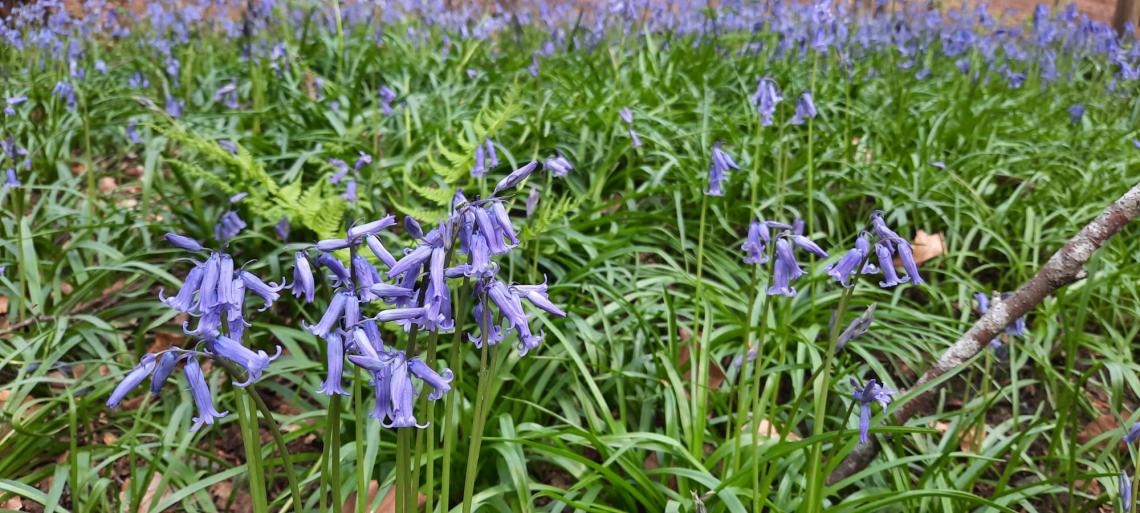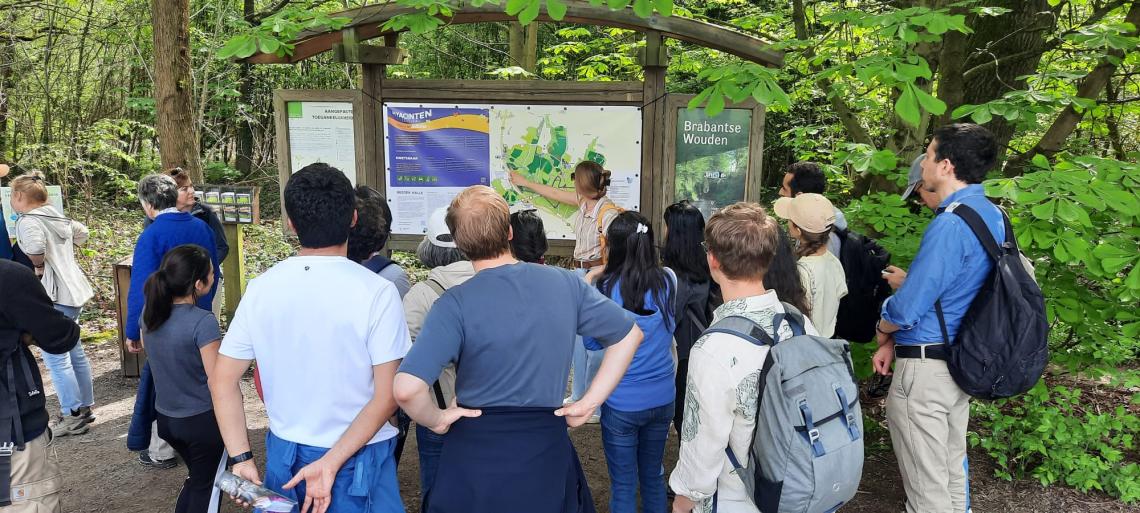We have noted down all of the notable tips and tricks for enjoying the forest with extra knowledge and preparedness.
Hallerbos is a forest located just south of Brussels, in a town called Halle. Halle is a part of the province of Vlaams-Brabant (or Flemish Brabant in English), the same province as Leuven!
To break down the name of the forest is very simple:
Halle = name of the town where it is located
Bos = forest in Dutch

How to get there from Leuven
To get to the forest from Leuven with public transportation you simply need to take a train to Halle (or Hal in French) and then from the Halle station take a bus to the forest. If you go during the week then you can take a normal city bus (be aware that if you have a ticket for De Lijn, this is not valid on a TEC bus, read more about public transportation in Belgium here). To find a bus you can use google maps or the TEC/De Lijn apps.
During the weekends of the blooming period there is even a free shuttle bus from the Halle station to the forest every 30 minutes! This year (2024) the free shuttle bus is running on April 13, 14, 20, 21, 27, 28, and May 1.
Biking from the station to the forest is also an option with the free bike rentals (while supplies last) on weekends and public holidays (the same dates as above in 2024).
There are also special bus and parking possibilities for people with disabilities. Reservations are required for the bus which takes visitors to a wheelchair accessible forest entrance. There are also reserved parking spaces for those with a less mobile card.
Tips when choosing your walking route
There are a few walking routes you can choose from, but there is one part of the forest than can’t be missed. So no matter which route you choose, make sure you walk in and around the part of the forest called “Tranendal”. In this part the flowers are the most abundant and truly resemble a sea of flowers or a blue carpet as some people say.
You can find the walking map via this link.
Other parts of the forest are also very beautiful and it is worth it to take a look at different sections as well.
Be warned that there are some hilly sections, so be prepared with suitable shoes and water.

Did you know?
- If you plant bluebells in your garden, you won’t see their blooms until after 5 years!
- They are extremely delicate flowers and if they are stepped on it can prevent their leaves from photosynthesizing, therefore killing the plant. This is way when you visit the forest you need to stay on the paths!
- “these unique purple flowers are popularly referred to as snottebellen (boogers), as their stems often produce a snot-like mucus?”*
- “their bulbs were used as a source of glue and starch in the Middle Ages?”*
- “wild bluebells are often confused with Spanish bluebells, which are planted in gardens and parks? Spanish bluebells have larger flowers, blue anthers and broader leaves (2 to 4 cm). Wild bluebells have beige anthers and narrower leaves up to 1.6 cm wide. Wild-Spanish bluebell hybrids are able to reproduce by themselves, which is why it's a major problem when Spanish bluebells make their way into woodland with wild bluebells. Over the long term, only the hybrid would survive. You can help prevent this issue by not planting Spanish bluebells in your garden. That way, there's no chance of them making their way into the wild.”*
*Source: Visit Halle

How to get more info
Visit the Hallerbos website to get more info on th walking routes, blooming periods and forest management. https://www.hallerbos.be/en/
Vlaams Brabant website: https://www.toerismevlaamsbrabant.be/en

